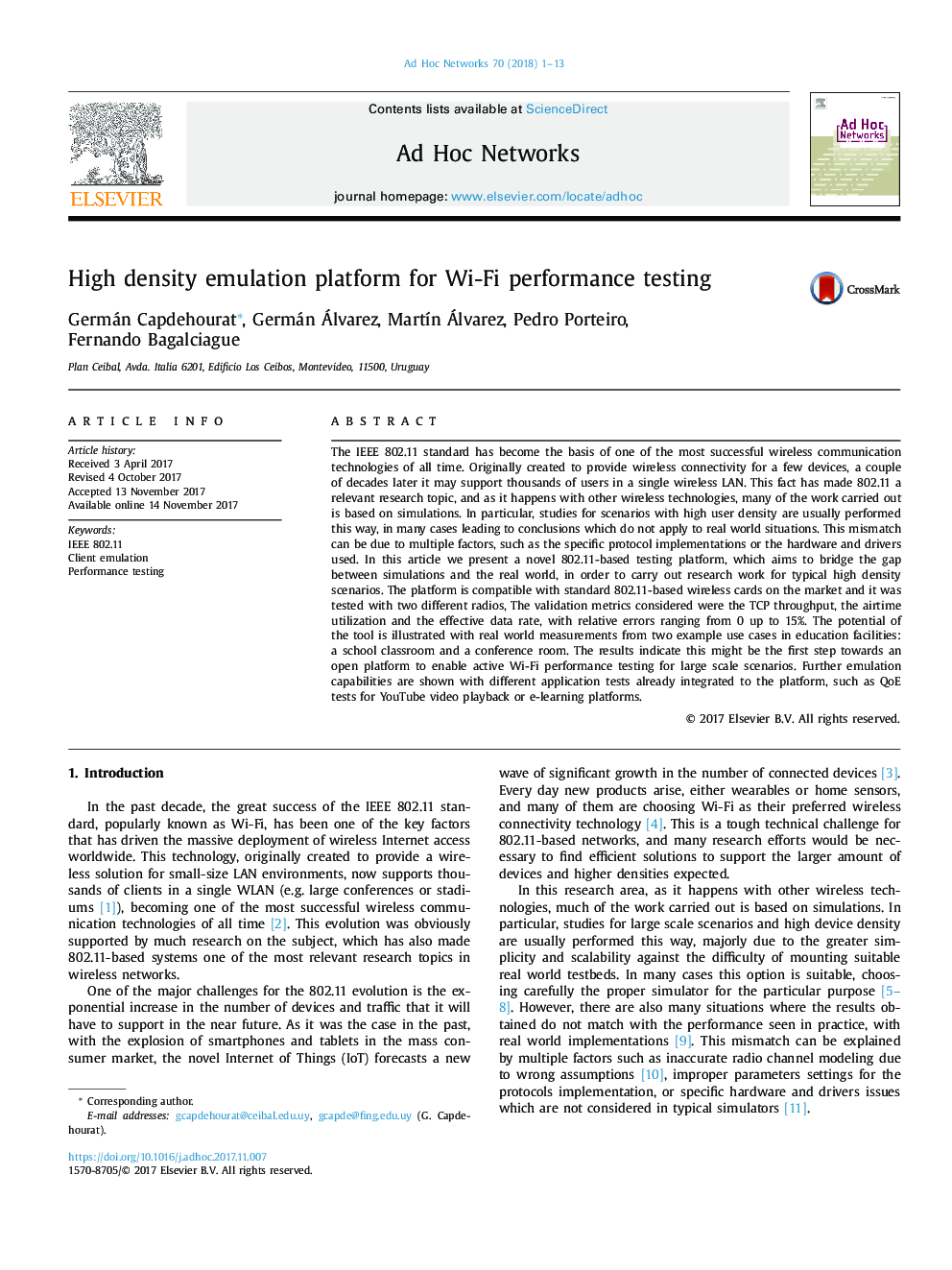| Article ID | Journal | Published Year | Pages | File Type |
|---|---|---|---|---|
| 6878614 | Ad Hoc Networks | 2018 | 13 Pages |
Abstract
The IEEE 802.11 standard has become the basis of one of the most successful wireless communication technologies of all time. Originally created to provide wireless connectivity for a few devices, a couple of decades later it may support thousands of users in a single wireless LAN. This fact has made 802.11 a relevant research topic, and as it happens with other wireless technologies, many of the work carried out is based on simulations. In particular, studies for scenarios with high user density are usually performed this way, in many cases leading to conclusions which do not apply to real world situations. This mismatch can be due to multiple factors, such as the specific protocol implementations or the hardware and drivers used. In this article we present a novel 802.11-based testing platform, which aims to bridge the gap between simulations and the real world, in order to carry out research work for typical high density scenarios. The platform is compatible with standard 802.11-based wireless cards on the market and it was tested with two different radios, The validation metrics considered were the TCP throughput, the airtime utilization and the effective data rate, with relative errors ranging from 0 up to 15%. The potential of the tool is illustrated with real world measurements from two example use cases in education facilities: a school classroom and a conference room. The results indicate this might be the first step towards an open platform to enable active Wi-Fi performance testing for large scale scenarios. Further emulation capabilities are shown with different application tests already integrated to the platform, such as QoE tests for YouTube video playback or e-learning platforms.
Keywords
Related Topics
Physical Sciences and Engineering
Computer Science
Computer Networks and Communications
Authors
Germán Capdehourat, Germán Álvarez, MartÃn Álvarez, Pedro Porteiro, Fernando Bagalciague,
